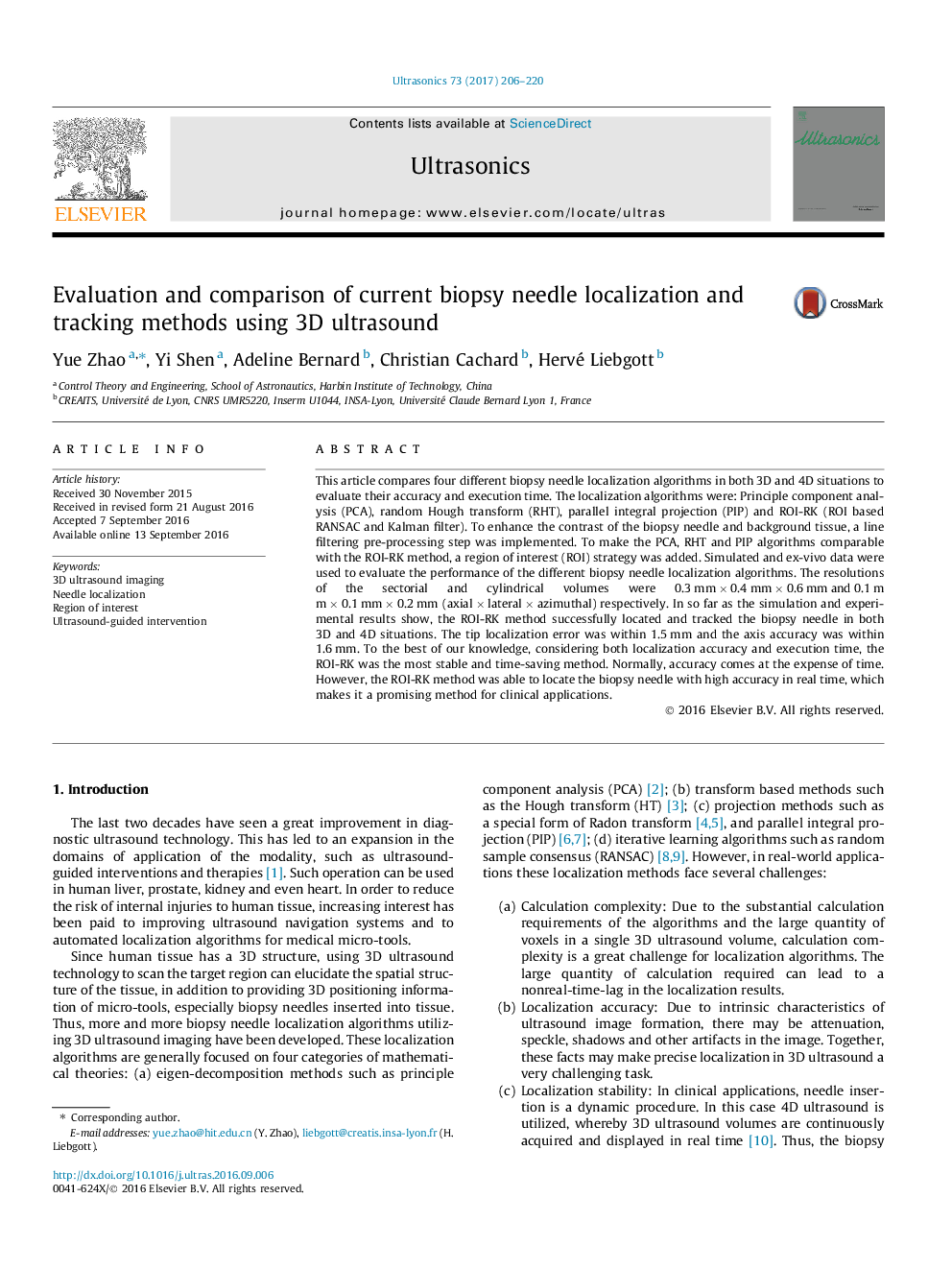| Article ID | Journal | Published Year | Pages | File Type |
|---|---|---|---|---|
| 8130145 | Ultrasonics | 2017 | 15 Pages |
Abstract
This article compares four different biopsy needle localization algorithms in both 3D and 4D situations to evaluate their accuracy and execution time. The localization algorithms were: Principle component analysis (PCA), random Hough transform (RHT), parallel integral projection (PIP) and ROI-RK (ROI based RANSAC and Kalman filter). To enhance the contrast of the biopsy needle and background tissue, a line filtering pre-processing step was implemented. To make the PCA, RHT and PIP algorithms comparable with the ROI-RK method, a region of interest (ROI) strategy was added. Simulated and ex-vivo data were used to evaluate the performance of the different biopsy needle localization algorithms. The resolutions of the sectorial and cylindrical volumes were 0.3 mm Ã 0.4 mm Ã 0.6 mm and 0.1 mm Ã 0.1 mm Ã 0.2 mm (axial Ã lateral Ã azimuthal) respectively. In so far as the simulation and experimental results show, the ROI-RK method successfully located and tracked the biopsy needle in both 3D and 4D situations. The tip localization error was within 1.5 mm and the axis accuracy was within 1.6 mm. To the best of our knowledge, considering both localization accuracy and execution time, the ROI-RK was the most stable and time-saving method. Normally, accuracy comes at the expense of time. However, the ROI-RK method was able to locate the biopsy needle with high accuracy in real time, which makes it a promising method for clinical applications.
Related Topics
Physical Sciences and Engineering
Physics and Astronomy
Acoustics and Ultrasonics
Authors
Yue Zhao, Yi Shen, Adeline Bernard, Christian Cachard, Hervé Liebgott,
